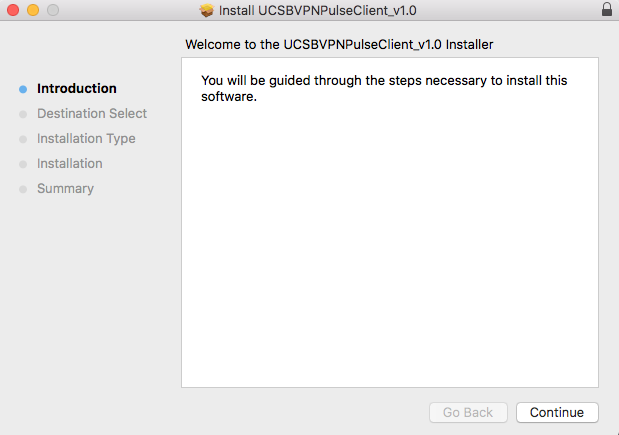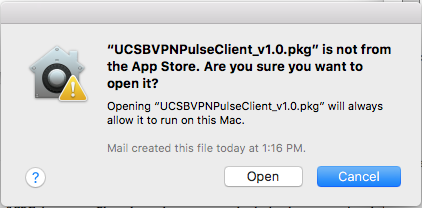Junos Pulse 5.1 for Mac is available as a free download on our application library. The most popular versions of the tool are 5.0, 4.2 and 3.1. The bundle id for this application is net.juniper.Junos-Pulse. The program is categorized as Internet & Network Tools. Our antivirus check shows that this Mac download is clean. It has a connection for one Pulse Secure server but the user browses to a different Pulse Secure server, logs into the server, and then clicks the Pulse Client button on the Web portal page. The following action occurs: 1. A new dynamic connection is created on Pulse Client for this Pulse Secure server. (Note that the default connection on the. The macOS Big Sur 11.2.1 update that Apple released today fixes a sudo security vulnerability that could allow an attacker to gain root access to a Mac. According to an Apple security support. Security Advisory Alert (Updated April 19th, 2021): We recently updated the Security Advisory for CVE-2021-22893. Please visit SA44784 for more information. Pulse Secure Support helps you maintain your Secure Access deployment and provides rapid response for issue resolution. Our support centers are conveniently located in APAC, EMEA, and North. Download the Pulse Secure Access Client for your device. One universal client for Pulse Connect Secure, Pulse Policy Secure and Pulse Workspace. Beautiful experience on mobile and desktop. Enjoy Secure Access on any of your devices, everywhere.
Faculty, staff and students can establish a secure connection to the UConn network via the Pulse Secure client (a VPN software). The VPN provides an encrypted connection between your computer and the UConn network and allows you to access restricted resources.
Not all university services and systems require a VPN connection for access. You can log into and use many services, such as email, Core-CT, library resources, and OneDrive, off-campus without a VPN.
Installing and Configuring Pulse Secure Client for Windows
To configure your VPN client,
Visit the Pulse Secure Client page in the UConn Software Catalog to choose the download that is appropriate for your OS.
- Review the article Installing and Configuring Pulse Secure Client for Windows.
Installing and Configuring Pulse Secure for Mac OS
To configure your VPN client,
Please visit the Pulse Secure Client page on the software site to choose the download that is appropriate for your OS.
- Review the article Installing Pulse Secure on Mac OS.
Installing and Configuring Pulse Secure Client for iOS and Android Devices
The Pulse Secure Client app is also available for iOS and Android mobile operating systems. To configure your VPN client, download the application from the Google Play Store or Apple App Store.
Installing and Configuring Pulse Secure Client for Linux
To configure your VPN client.
Please visit the Pulse Secure Client page on the software site to choose the download that is appropriate for your OS.
- Review the article Installing the Pulse Secure Client on Linux.
Completely Removing the Desktop Client from a System
Follow the instructions located on this page to completely remove the Desktop client from your system:
Compatibility
Pulse Secure VPN client software is compatible with a wide range of operating systems and configurations. It is available for Windows, Mac OSX, Android and iOS mobile devices. The software has been tested on the following platforms:
Platform | Operating System | Browser Environment |
|---|---|---|
Windows | Windows 10 Version 2004 (OS build 10.0.19041.572) Enterprise, 32 and 64 bit Windows 10 Version 1909 10.0.18363.535 Windows 8.1 Enterprise, 64 bit Windows 2012 | Microsoft Edge Browser 86.0.622.43 (64-Bit) Internet Explorer 11.388.19041.0 Chrome 84.0.4147.89 Firefox ESR 68.9.0esr Chromium-based Edge Browser 86.0.622.48 (Official build) (64-bit) |
Windows 10 Version 20H2 (OS build 10.0.19042.572) Professional, 64 bit Windows 10 Version 1903 (OS build 10.0.18362.476) Professional, 64 bit Windows 10 Version 1903 10.0.18362.449 Windows 10 Redstone 5 Version 1809 (OS build 17763.437), Enterprise, 64 bit Windows 10 Redstone 4 Version 1803 (OS build 17134.228) Windows 10 Enterprise, 32 bit Windows 10 non-Enterprise, 32 and 64 bit Windows 10 Redstone Windows 10 Enterprise, 32 and 64 bit Windows 8.1 non-Enterprise, 32 and 64 bit Windows 2019 Windows 2016 | Edge browser 86.0.622.48 (Official build) (64-bit) Internet Explorer 11.264.19041.0 Google Chrome 78.0.3904.97 | |
Mac OS X | macOS Catalina 10.15.6 macOS 10.14, 64 bit macOS 10.13, 64 bit | Safari 13.x, and 12.x |
| Mac OS X | Big Sur RC2 macOS 10.15.3, 64 bit macOS 10.15.2, 64 bit | Safari 14.0.1 |
Related Articles
This article covers how students, faculty, and staff install the Pulse Secure VPN client on Mac OS X 10.13 or macOS 10.14 and higher.
If you need assistance or if you are not running MacOS 10.13 or higher, submit a support ticket to the Technology Support Center.
Choose your OS
Mac OS 11 Upgrade
Mac users who upgrade to the latest version of macOS 11 (Big Sur) should uninstall the Pulse Secure client prior to the upgrade and then install the latest version available after the macOS upgrade is complete. Use the 'Simple Removal' instructions on the Removing the Pulse Secure Desktop Client guide.

If you upgrade to macOS 11 (Big Sur) ) with a version of Pulse Secure older than 9.1.9 installed it can cause a Mac running Big Sur to crash and restart 4-5 times before recovering.
Pulse Secure Download Mac Catalina Download
- Download the Pulse Secure Desktop client for Mac OS 11.
- Click on the file to extract the installer.
- Double click on the pkg file to initiate the install process.
- Once the installer begins, click Continue.
- Click Install to begin the installation.
You may encounter several popups during and after the install process when attempting to connect to the UConn network.
System Extension AND Network Content Filtering:
This prompt below will pop up after installation (If your Mac is managed by ITS you will not see this pop up).
- Click Ok
- Click the lock in the bottom left corner to make changes (You will be prompted for your user password).
- Click Allow

Filter Network Content:

This prompt will popup during the connection process the first time press Allow; if you do not press Allow the VPN will not work correctly. *If you do not see this prompt, see the below fix.
If you don't press anything or if you press Don't Allow you will soon see this popup:
Press Retry and then press Allow when the popup pictured above re-appears.
*If the 'Filter Network Content' prompt does not appear:
- Quit the Pulse Secure app.
- Navigate to Apple menu > System Preferences > Network
- Select Pulse Secure in the left-hand menu and click the minus button ( - ) to remove it.
- Open the Pulse Secure app again and connect to the VPN. The Filter Network Content prompt shown above should now appear. If it does not, repeat this process and try again.
- Download the Pulse Secure Desktop client for Mac OS.
- Click on the file to extract the installer.
- Double click on the pkg file to initiate the install process.
- Review the following warning, select 'OK'
- Click on the Apple icon in the top-left of your screen. Choose System Preferences > Security & Privacy > General
- Find the warning 'PulseSecure.pkg' was blocked from use because it is not from an identified developer.' Select 'Open Anyway'
- Review the following warning, select 'Open'.
- Run through the installation process.
- Download the Pulse Secure Desktop client for Mac OS X.
- Click on the file to extract the installer.
- Double click on the pkg file to initiate the install process.
- Once the installer begins, click Continue.
- Click Install to begin the installation.
- During the installation process you should expect to see several pop-up messages informing you of security steps that need to be taken to complete the install.
- Click OK on the first two messages.
- Click 'Open Security Preferences' in the third message to open up the 'Security & Privacy' settings window.
- Click OK on the first two messages.
- Once the Security & Privacy window has opened, look for the following message: System software from developer 'Pulse Secure LLC' was blocked from loading.
- Next to the message, click Allow to enable the extension.
If you do not receive the above mentioned pop-up messages, you will need to manually permit the Pulse Secure Client the required access.
If you wait longer than 30 minutes to complete this process, you will need to uninstall and reinstall the client and then follow this process again.- To manually permit access to the client,
- Click the Apple menu at the top left of your desktop.
- Click System Preferences.
- Click Security & Privacy.
- Click the lock to make changes.
- Click the General tab.
- Under Allow apps downloaded from, select App Store and identified developers
- Look for the following message: System software from developer 'Pulse Secure LLC' was blocked from loading.
- Next to the message, click Allow to enable the extension.
- To manually permit access to the client,
- Close the Security & Privacy window. The kernel extension will have been authorized and full functionality of the Pulse Desktop client should be available.
Configuring the Pulse Secure VPN Client after installation is complete
- Open the Pulse Secure client, which should be shown at the top right corner of the screen.
- Create a new connection using the + in the bottom left corner.
- Enter the following info:
- Connection name of your choosing
- The server URL, vpn.uconn.edu
- Click Add.
- Close the client.
- To start the VPN session, go back to the Pulse Secure client in the top right corner of the screen.
- Select the connection you created.
- Select Connect.
- When prompted for a username and password, enter your NetID and NetID password.
- When attempting to connect, you may receive the following prompt. Select 'Open Security Preferences'.
- Within 'Security Preferences', select the lock on the bottom left corner. Once unlocked, select Allow, for the system to allow Pulse Secure to load.
Once you receive this prompt, select Allow to allow Pulse to operate. After this, you should be all set to connect via Pulse Secure. *If you do not see this prompt, see the below fix.
*If the 'Filter Network Content' prompt does not appear:
1. Quit the Pulse Secure app.
2. Navigate to Apple menu > System Preferences > Network
3. Select Pulse Secure in the left-hand menu and click the minus button ( - ) to remove it.
4. Open the Pulse Secure app again and connect to the VPN. The Filter Network Content prompt shown above should now appear. If it does not, repeat this process and try again.